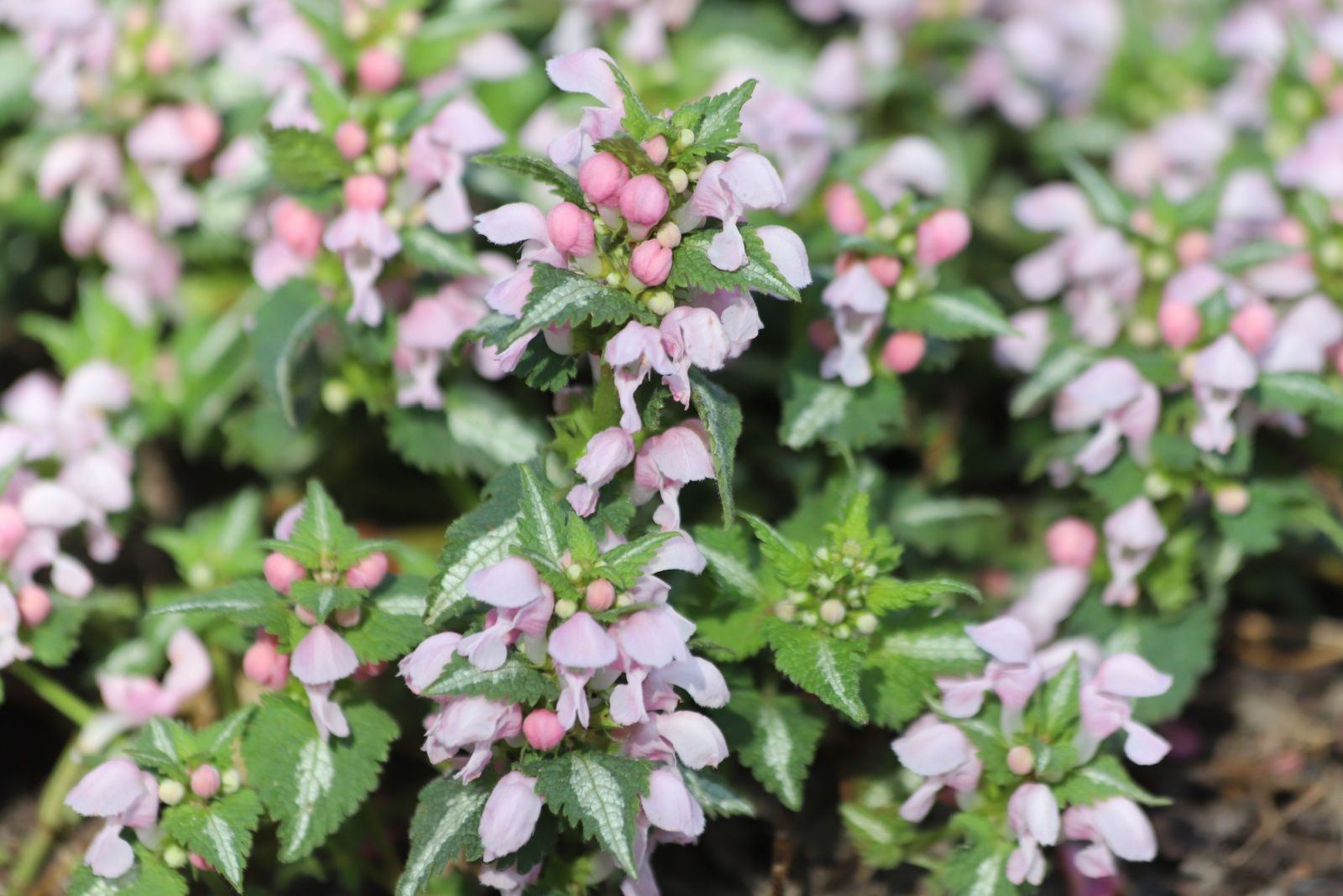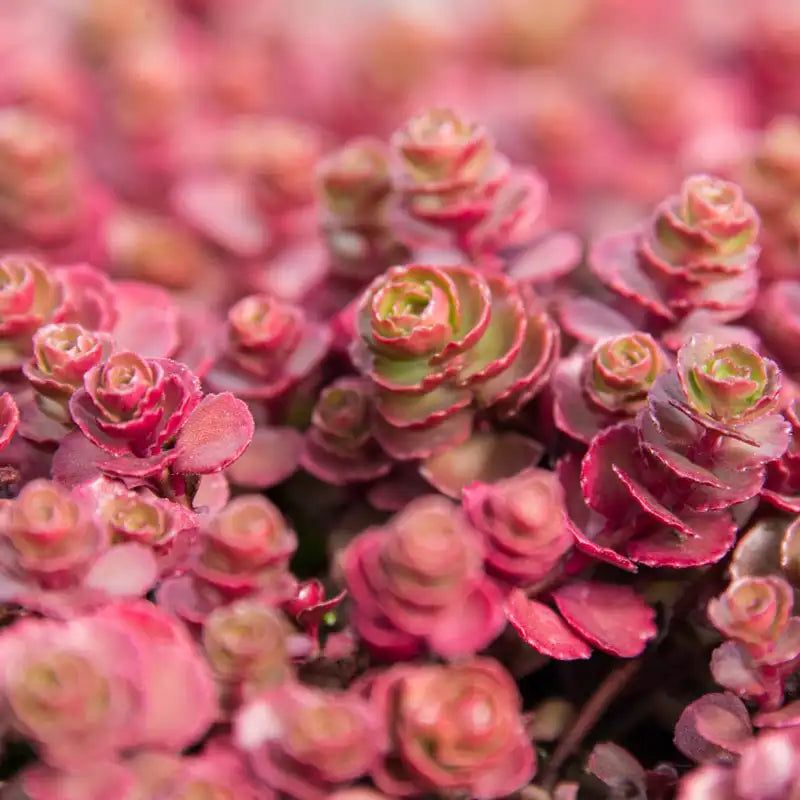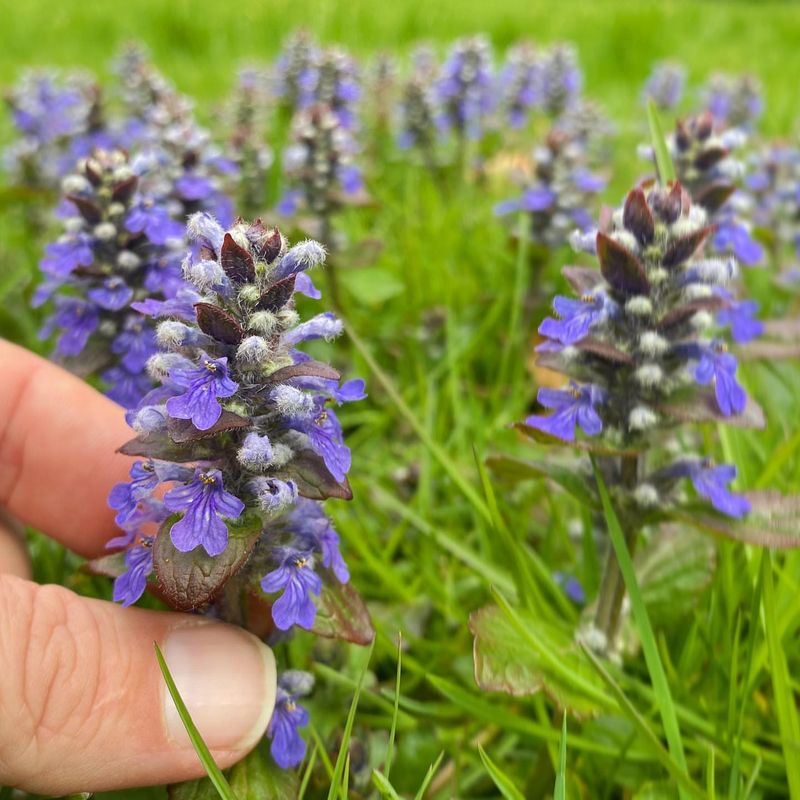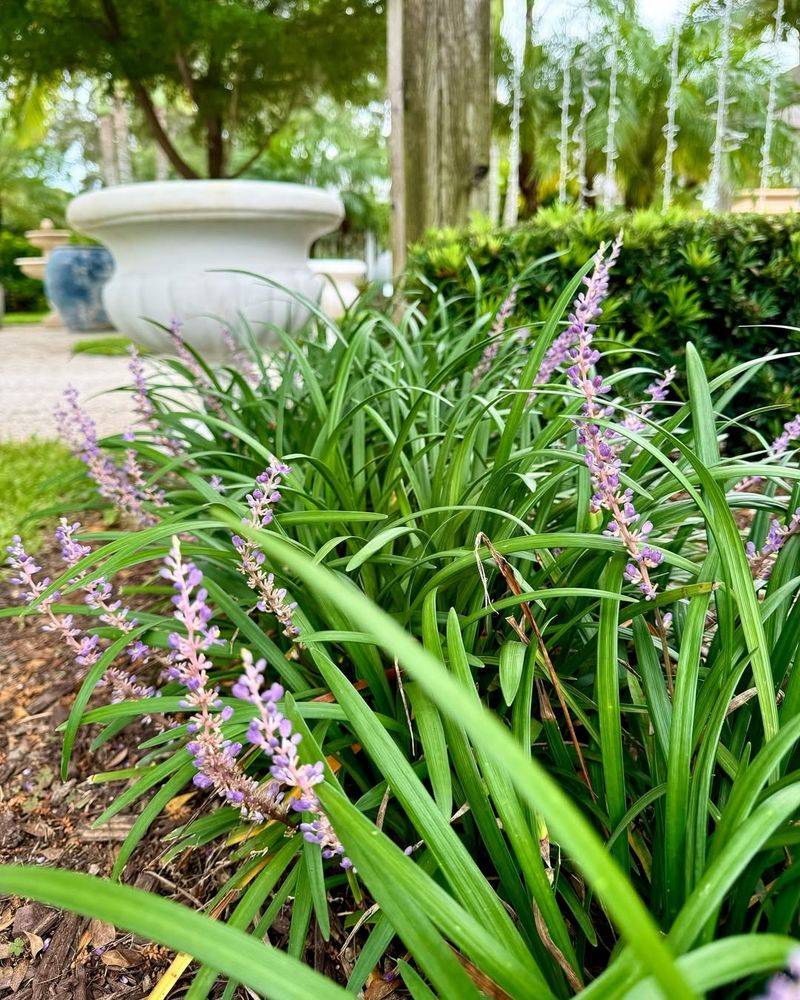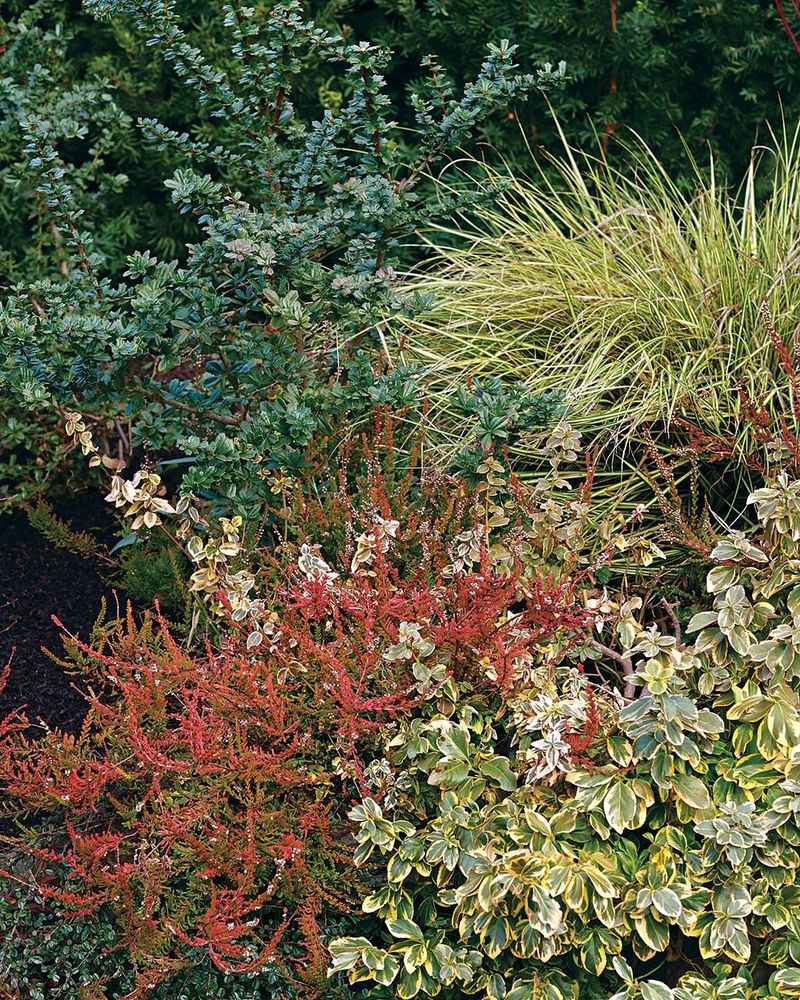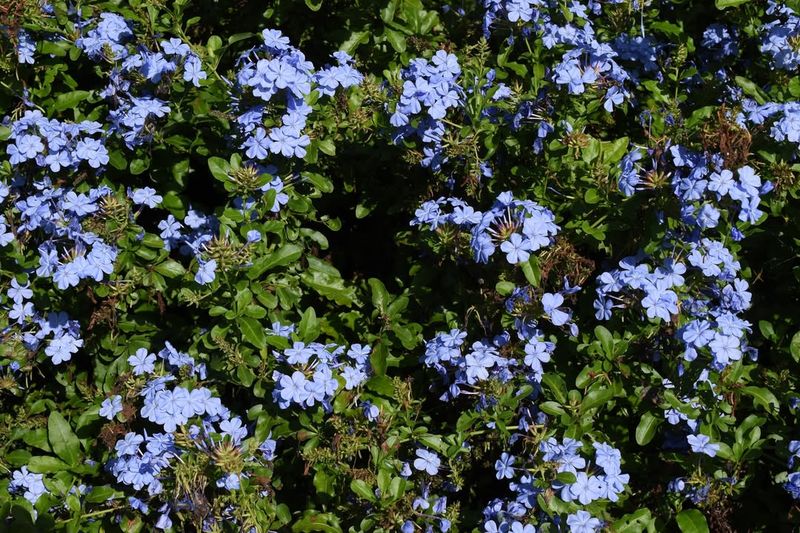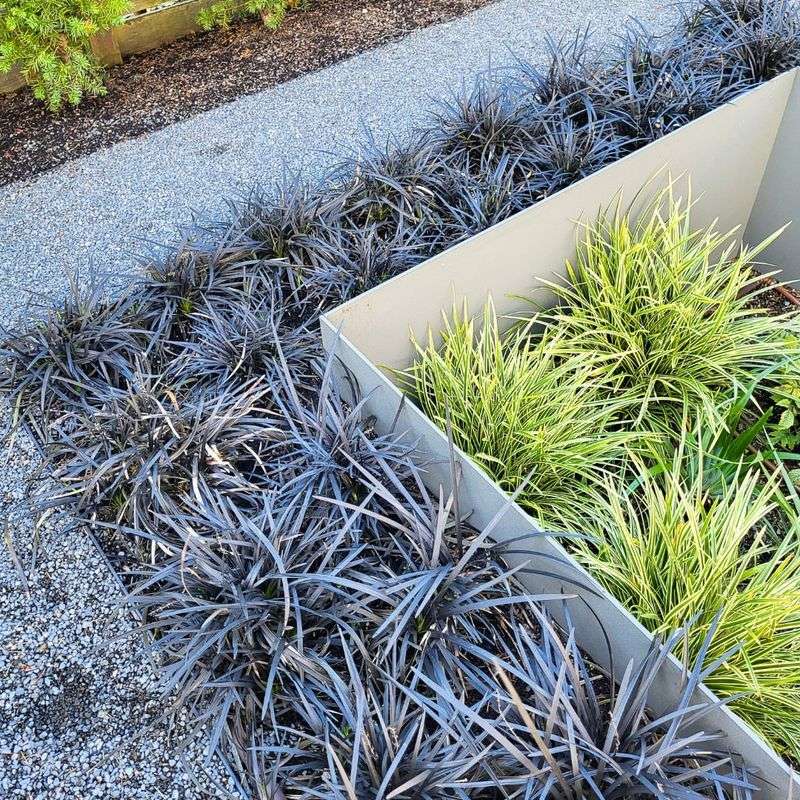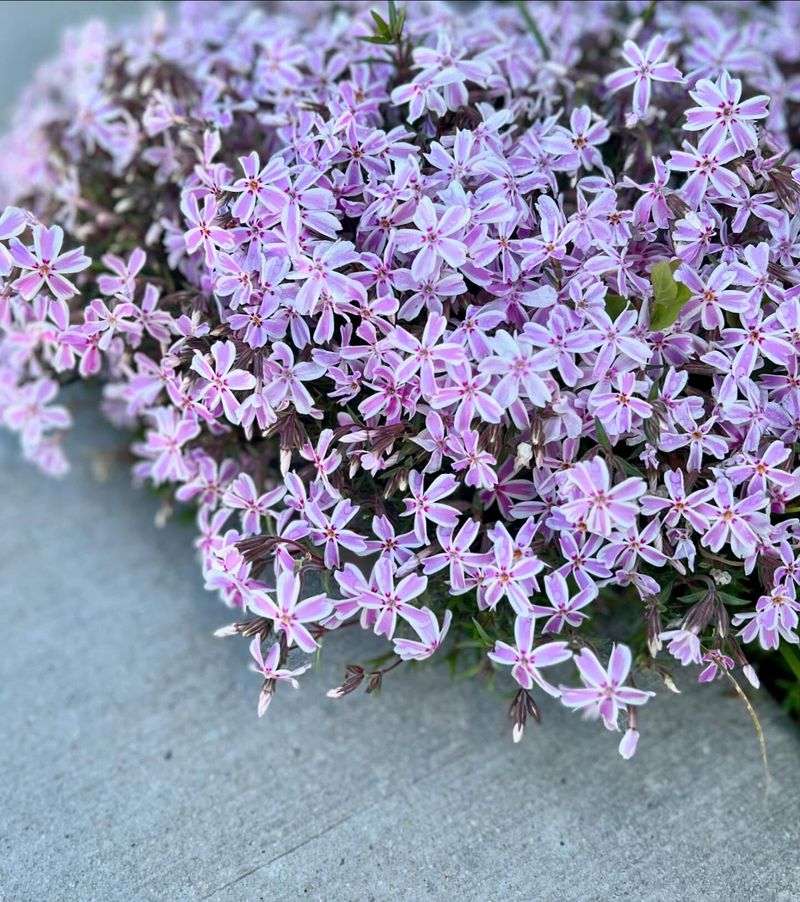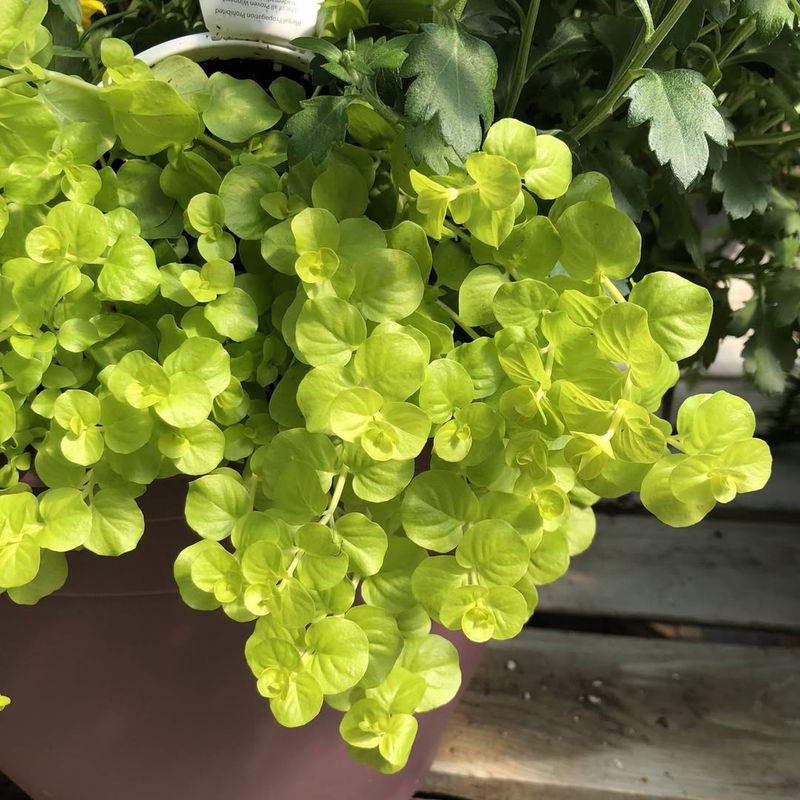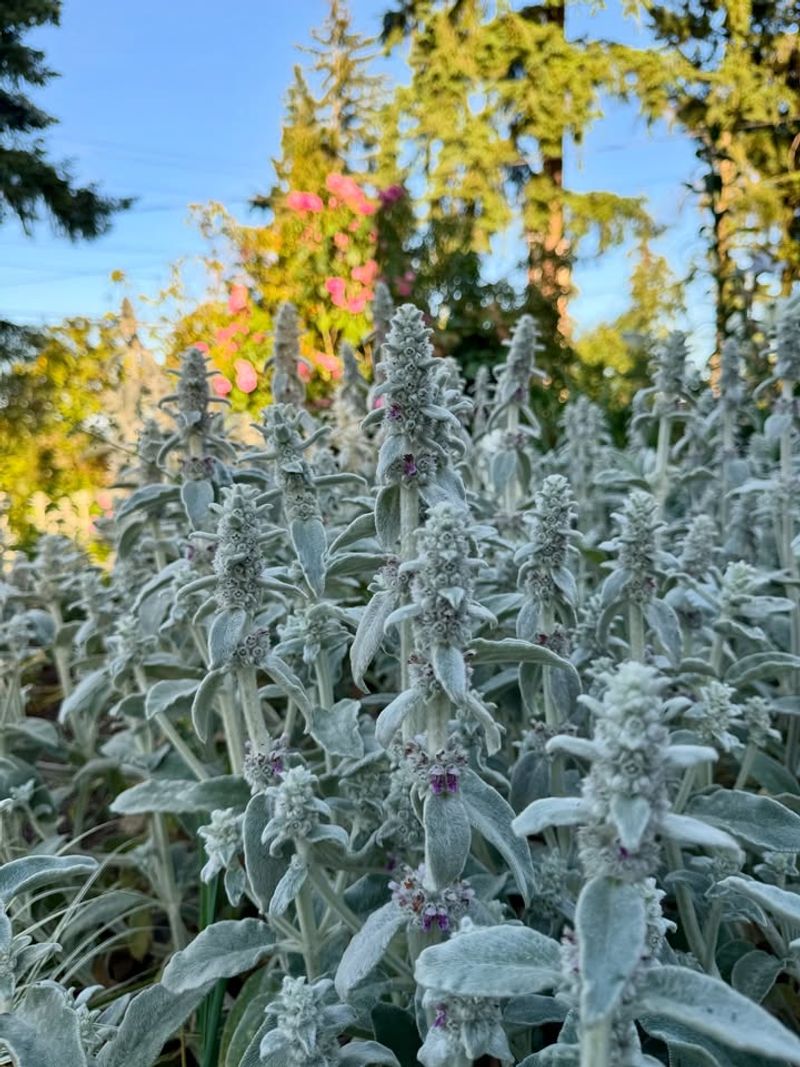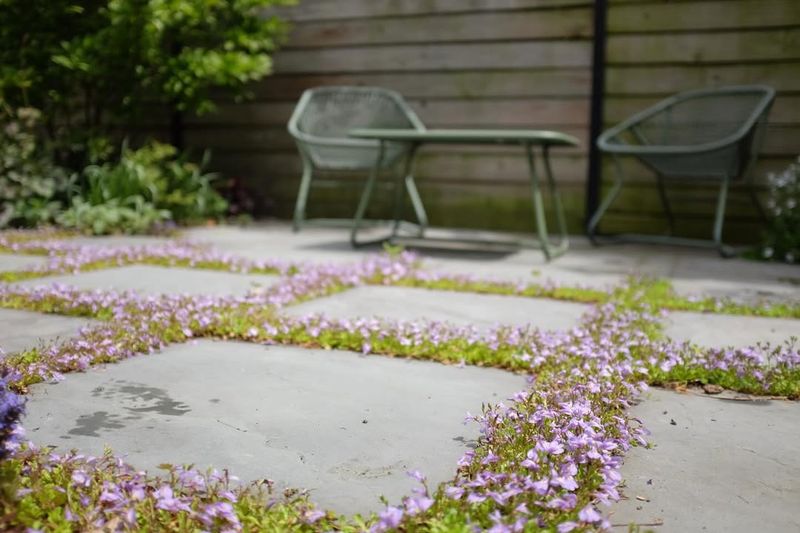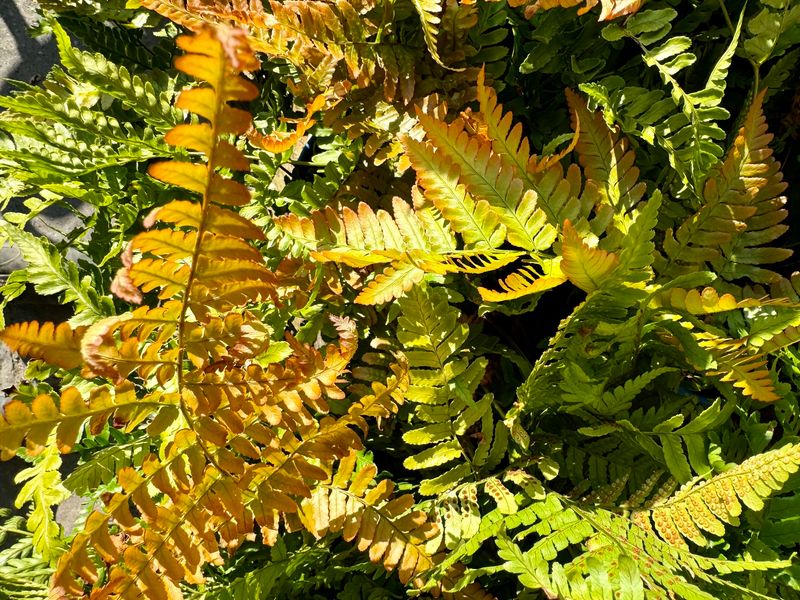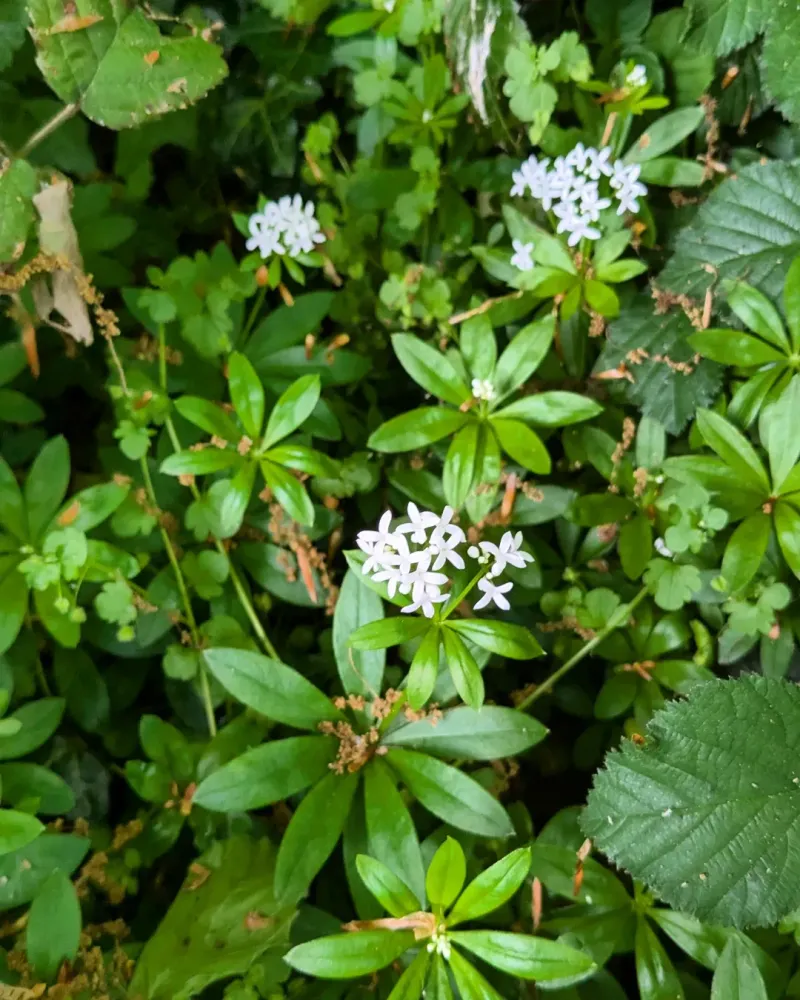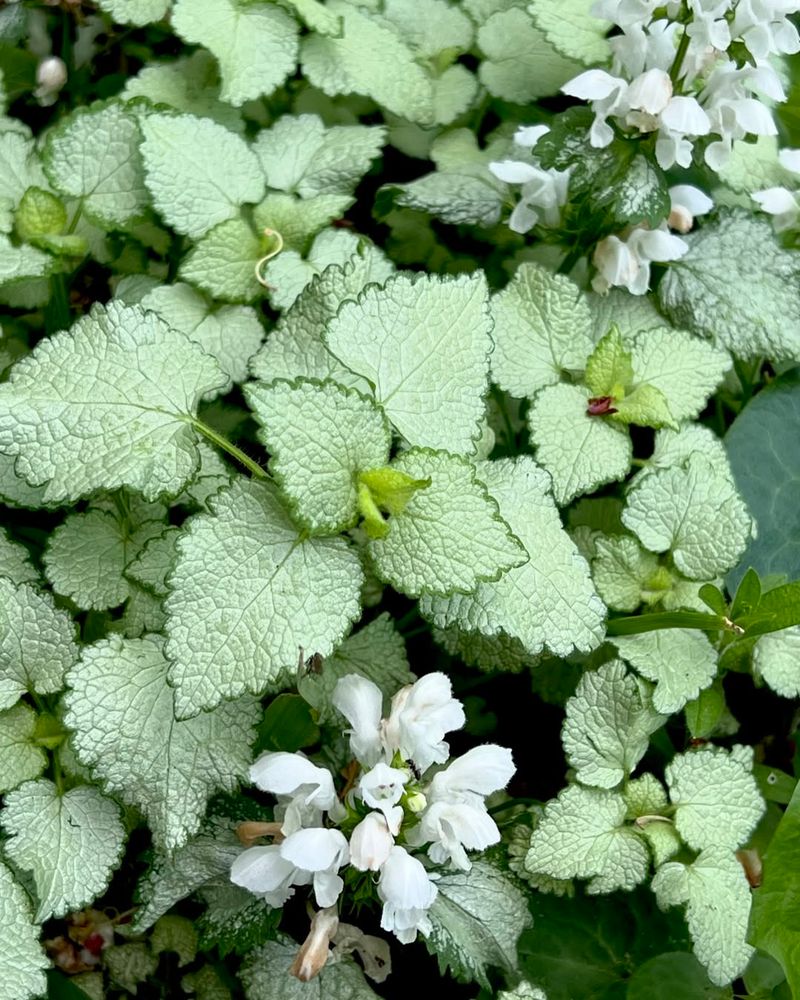Just because summer’s heat has packed its bags doesn’t mean your garden has to fade into the background. In South Carolina, fall is far from the end of the growing season—it’s a second act.
With the right perennial groundcovers, you can keep your landscape bursting with color well into the cooler months. These 13 hardy beauties don’t just survive the Southern fall—they thrive in it, spreading vibrant carpets of texture and hue while asking little in return.
1. Creeping Sedum (Sedum spurium)
Succulent leaves turn brilliant shades of bronze, red, and burgundy when autumn temperatures drop, creating a living carpet of warm color. Drought-tolerant once established, this low-maintenance plant spreads quickly across sunny areas without becoming invasive.
Star-shaped flowers appear in late summer and persist into fall, adding extra visual interest. Plant it between stepping stones, along borders, or in rock gardens where its cascading habit shines beautifully throughout the season.
2. Ajuga (Ajuga reptans)
Bronze, purple, and burgundy foliage varieties provide stunning contrast against green lawns and garden beds during cooler months. Fast-spreading and shade-tolerant, Ajuga fills in difficult spots where grass struggles to grow.
Blue or purple flower spikes emerge in spring, but the colorful leaves remain attractive through fall and winter. Ideal for slopes, beneath trees, or as edging, this tough groundcover handles foot traffic surprisingly well once established in your landscape.
3. Liriope (Liriope muscari)
Grass-like evergreen foliage stays attractive all year, while purple or white flower spikes add September and October color to shaded areas. Clumping or spreading varieties adapt well to South Carolina’s climate and require minimal care.
Tolerant of drought, heat, and poor soil, Liriope thrives where other plants fail. Use it along pathways, under trees, or as borders where its arching leaves create elegant texture that complements both formal and casual garden designs beautifully.
4. Wintercreeper (Euonymus fortunei)
Variegated varieties display leaves edged in gold, cream, or pink that intensify as temperatures cool, bringing eye-catching color to vertical and horizontal surfaces. Evergreen and adaptable, this versatile groundcover climbs walls or spreads flat across soil.
Some cultivars develop reddish-purple tints in fall, adding seasonal drama to your landscape. Plant it in sun or partial shade where it will quickly cover ground, suppress weeds, and maintain year-round interest with minimal maintenance required.
5. Plumbago (Ceratostigma plumbaginoides)
Sky-blue flowers bloom prolifically from late summer through fall, creating a stunning carpet of color just when most plants fade. Green leaves transform into brilliant shades of red, orange, and bronze as autumn progresses.
This deciduous groundcover dies back in winter but returns reliably each spring, spreading steadily without becoming aggressive. Perfect for borders, rock gardens, or beneath shrubs, Plumbago thrives in full sun to partial shade and tolerates South Carolina’s heat beautifully.
6. Mondo Grass (Ophiopogon japonicus)
Dark green, narrow leaves form dense mats that remain evergreen throughout South Carolina winters, providing consistent texture and color. Extremely shade-tolerant, Mondo grass excels in spots where sunlight barely reaches.
Small white or pale purple flowers appear in summer, followed by blue-black berries that add subtle fall interest. Slow to establish but long-lived once settled, this groundcover works wonderfully between pavers, as lawn alternatives, or edging shaded pathways where little else survives.
7. Creeping Phlox (Phlox stolonifera)
While spring brings masses of blue, pink, or white flowers, the semi-evergreen foliage provides reliable fall and winter color in woodland settings. Native to eastern North America, this groundcover naturally thrives in South Carolina’s climate.
Spreading slowly by stolons, it forms attractive mats in partial to full shade without becoming weedy. Plant it beneath deciduous trees or along shaded slopes where its low profile and soft texture create a naturalistic look that blends seamlessly with surrounding native plants.
8. Golden Creeping Jenny (Lysimachia nummularia ‘Aurea’)
Bright chartreuse foliage glows like sunshine even in shaded areas, bringing cheerful color to fall gardens when many plants look dull. Round, coin-shaped leaves cascade beautifully over container edges or spread rapidly across moist soil.
Small yellow flowers appear in summer, but the vibrant foliage remains the star attraction throughout the growing season. Plant it near water features, in rain gardens, or anywhere moisture collects where its trailing habit and brilliant color create stunning visual impact.
9. Lamb’s Ear (Stachys byzantina)
Soft, silvery-gray leaves feel like velvet and provide striking contrast against darker foliage throughout fall and winter. Evergreen in mild South Carolina winters, this drought-tolerant groundcover thrives in sunny, well-drained locations.
Fuzzy flower spikes emerge in late spring but can be removed to keep focus on the beautiful foliage. Children love touching the soft leaves, making this an interactive addition to family gardens, borders, or rock gardens where its unique texture stands out.
10. Mazus (Mazus reptans)
Tiny purple or white flowers cover this low-growing groundcover in spring, but its dense, mat-forming habit provides excellent fall planting opportunities for quick establishment. Tolerant of light foot traffic, Mazus works wonderfully between stepping stones.
Semi-evergreen foliage stays attractive through mild winters, filling gaps and suppressing weeds effectively. Preferring moist soil and partial shade, this fast-spreading plant creates a lush carpet that softens hardscapes and adds charm to pathways and borders throughout your landscape.
11. Autumn Fern (Dryopteris erythrosora)
New fronds emerge coppery-red in spring and again in fall, creating seasonal color that sets this fern apart from typical green varieties. Evergreen in South Carolina’s mild winters, it provides year-round structure and texture.
Thriving in shade and moist soil, Autumn Fern grows 18 to 24 inches tall, making it taller than typical groundcovers but excellent for layered plantings. Combine it with shorter groundcovers for depth, or use it alone beneath trees where its graceful fronds add elegance to shaded spaces.
12. Sweet Woodruff (Galium odoratum)
Whorls of bright green leaves create a delicate, lacy texture that remains attractive from spring through fall in shaded areas. White, star-shaped flowers appear in late spring, adding sweetness to woodland gardens.
Spreading steadily through rhizomes, Sweet Woodruff forms dense mats that suppress weeds effectively without becoming invasive. Preferring moist, shaded conditions, it thrives beneath trees and along shaded borders where its fine texture and fresh appearance bring a cottage garden charm to your landscape year after year.
13. Spotted Dead Nettle (Lamium maculatum)
Silver-splashed leaves brighten shady corners throughout fall and winter, while pink, purple, or white flowers bloom sporadically during cooler months. Variegated foliage varieties offer exceptional color contrast against plain green groundcovers.
Fast-spreading and cold-hardy, Lamium fills in quickly beneath trees and shrubs where grass won’t grow. Low-growing and semi-evergreen, it handles South Carolina’s mild winters beautifully while providing consistent visual interest that makes shaded areas feel intentional and well-designed throughout the year.

